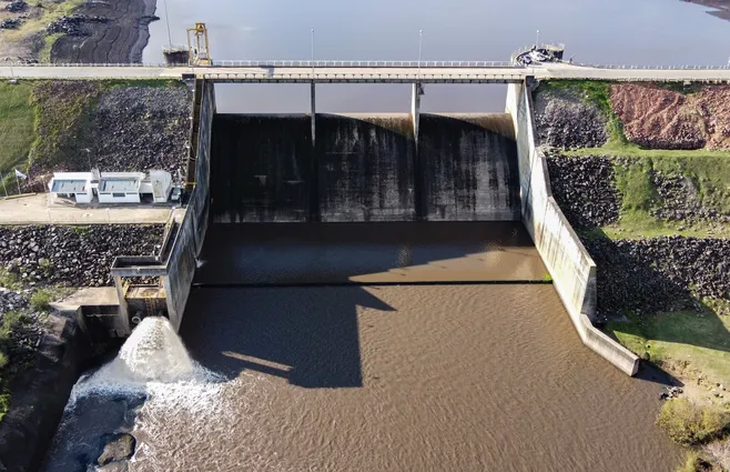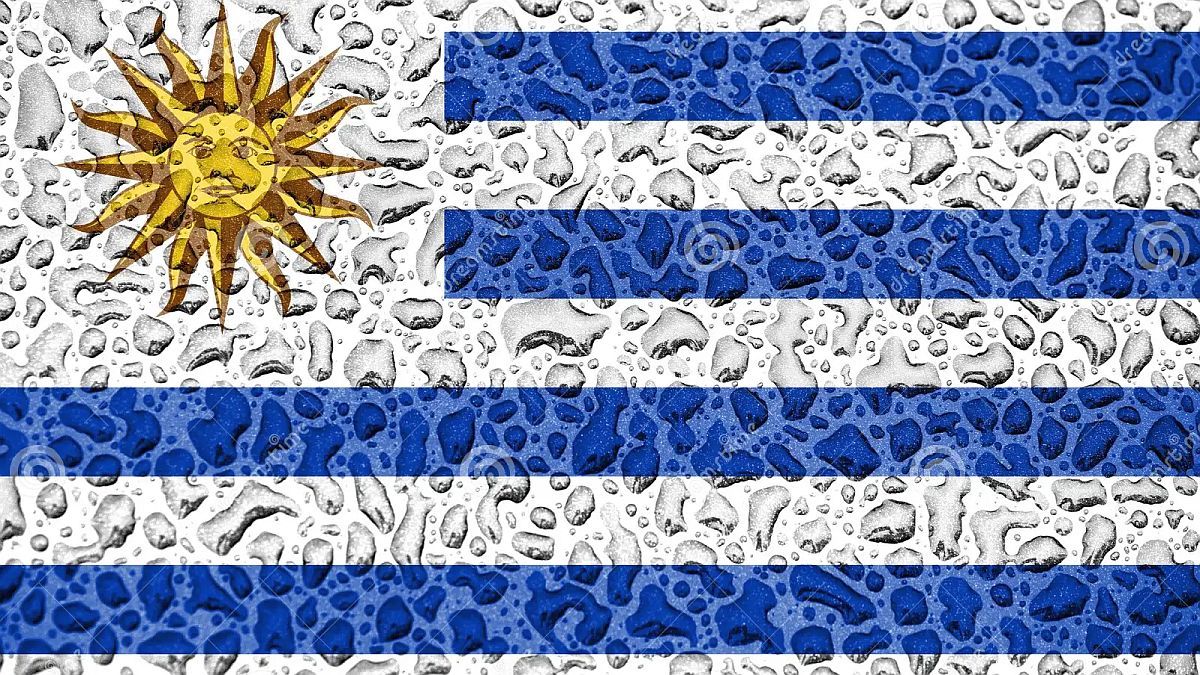Montevideo is on the verge of an unprecedented and historic, but extremely critical situation: running out of drinkable water for the population, in the midst of the water crisis that became water emergency after the worst drought of the last century. What will happen when the reserves are completely depleted?
“For now it is still drinkable,” said the president Luis Lacalle Pouensuring that notice will be given in advance when the situation changes and the levels of sodium and chlorides —high due to the impossibility of mixing the water in the Silver river (salty) with that of Santa Lucia River (sweet) due to the depletion of this last source— do not allow to continue consuming the water distributed by the National Administration of State Sanitary Works (OSE).
However, that “time” is increasingly limited: according to estimates, the country’s capital has approximately six days of drinking water left if there are no copious rains that allow it to recover some of the lost reserves.
Meanwhile, the level in the reservoir of Severine Pass it continues to fall, and it has already reached 1.75% of its capacity —just 1,173,573 cubic meters of its total capacity of 67,000,000 cubic meters—; and the salinity in the water shot up in all the pumping lines that supply the capital and its surroundings, far exceeding the maximum limits of sodium and chlorides allowed by the Ministry of Public Health (MSP).
Now, it seems that the moment in which the water finally ceases to be drinkable in the metropolitan area is getting closer and is inevitable. Faced with this scenario, OSE and the departmental governments, as well as the national government, prepared various measures to guarantee the supply of this essential resource in the population.
Emergency plans for when the water runs out
The possibility of the metropolitan area running out of water has been considered for weeks, and the deadline has been postponed thanks to some scant rains that allowed reserves to be maintained for a few more days. However, the speed with which the water level continues to drop in Paso Severino – it has lost more than half its flow in the last two weeks – suggests that the depletion of drinking water is closer than ever.
In this scenario, OSE is working on an application for cell phones that will make it possible to organize the distribution of bottled or subsidized water among the citizens of the affected area, thus guaranteeing the supply. For this, the state company bought software for 40 million pesos (plus VAT) to the technology company Probe, whose operation would include the possibility of having a certain amount as a credit to spend on bottled water. The credit —at the government’s determination— will be used by businesses that sell water and will allow them to buy it at no cost or at a subsidized price. However, there was no news on this topic in recent days.
Meanwhile, the desalination plant that should come from Houston, United States, in the middle of last month —and that, in a scenario where the main source of water will be the Río de la Plata, which makes this machinery essential—, it could still take between one and two more weeks to arrive in the country, in both the device does not enter any of the planes that the government has available and the trip is made by boat.
Mineral Water Bottles Drums
Parliament voted to exempt bottled water from taxes due to the water emergency in Uruguay.
Photo: @montevideoIM
In parallel, the bottled water it has been the protagonist of various measures, as it is already a widely consumed product in the metropolitan area due to the higher salinity in the resource distributed by OSE; but it can become a fundamental element in the coming days. In this sense, since the end of May, the Ministry of Economy and Finance (MEF) enabled the importation of bottled water with exemption from taxes —particularly, from the consular fee and the one corresponding to the Technological Laboratory of Uruguay (LATU).
In addition, at the end of June the Parliament approved the law to completely exempt from taxes in this product —with and without gas—, as long as the water emergency lasts and with the aim of controlling prices in the face of a constant increase in demand that can increase drastically in the short term. Regarding this, we will have to see what will happen to the stock of bottled water in shops.
For its part, the government begins today to deliver assistance for 90,000 retirees and pensioners They charge the minimum. It consists of 850 pesos per month, equivalent to the purchase of two liters of water per day, and will be delivered together with the collection of passive activities. Meanwhile, Parliament has a bill creating a Water Emergency Fund and proposes this modality for 500,000 people in vulnerable situations —at a cost of 12 million dollars per month for the State—that will be directly affected when drinking water runs out.
Paso Severino water crisis.webp

The metropolitan area of Uruguay may run out of drinking water within the next week.
FocoUy Agency
Works to rescue the reserves
The emergency dams They are also another alternative that the government has been managing, with the one built on the Santa Lucía river, at the height of belastiqui, first of all. In this case, the work cost $500,000 and its objective was to isolate a section of the water course to manage it more efficiently. The problem was that the flow kept going down.
Now, the Executive Power is working to build a new emergency dam, this time in the san jose riverwhich will also have a series of 13 and a half kilometer pipes that will carry water to Belastiquí and then supply the running waters, from which the supply for the metropolitan area starts. This work will cost 40 million dollars and there are discrepancies regarding its completion period: while President Lacalle Pou announced that it would take only 30 days, the construction companies promised to deliver the works to OSE in two months. Regarding this, the president will meet tomorrow with the authorities of the state company to evaluate the state of the works.
In any case, the works do not seem to arrive on time and, once the drought ends, they will have to be destroyed as they are temporary solutions.
Meanwhile, the tanker trucks that already deliver potable water to hospitals and schools in the metropolitan area are likely to begin expanding their delivery range to other institutions. The Department of Maldonado, For its part, it has already offered the possibility of supplying Montevideo with its own reserves, sending 30,000 liters of water every half hour to guarantee supply in the capital.
Source: Ambito




